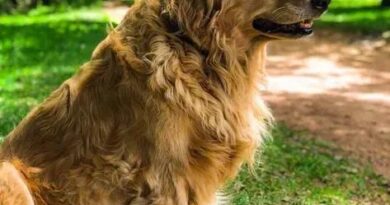O que é Ousadia
What is Boldness?
Boldness, often referred to as audacity, is the quality of being fearless and daring in the face of challenges. In the context of dog behavior, boldness can manifest in various ways, from a dog’s willingness to explore new environments to its readiness to confront unfamiliar situations. This trait is crucial for dogs, especially those involved in activities such as agility, obedience, or even therapy work, where confidence can significantly impact performance and interaction.
Understanding Boldness in Dogs
When we talk about boldness in dogs, we are referring to their innate ability to take risks and approach new experiences without hesitation. A bold dog is typically characterized by its adventurous spirit, curiosity, and lack of fear in unfamiliar situations. This trait can be beneficial, allowing dogs to adapt quickly to new environments and engage positively with people and other animals. However, it is essential to balance boldness with training and socialization to ensure that the dog’s confidence does not lead to reckless behavior.
The Role of Genetics in Boldness
Genetics plays a significant role in determining a dog’s boldness. Certain breeds are naturally more inclined to exhibit bold behaviors due to their historical roles and breeding purposes. For instance, working breeds like German Shepherds and Border Collies often display higher levels of boldness, as these traits were favored in their development for tasks requiring confidence and decisiveness. Understanding the genetic predisposition of a dog can help owners manage and nurture their boldness effectively.
Training a Bold Dog
Training a bold dog involves harnessing its fearless nature while instilling discipline and control. Positive reinforcement techniques are particularly effective, as they encourage bold dogs to explore and engage with their environment while rewarding them for appropriate behavior. Training sessions should be structured to include challenges that stimulate the dog’s boldness, such as obstacle courses or interactive games, ensuring that the dog remains engaged and learns to channel its energy positively.
Socialization and Boldness
Socialization is a critical aspect of developing a well-rounded, bold dog. Exposing a dog to various environments, people, and other animals from a young age helps to build its confidence and reduce the likelihood of fear-based reactions. A well-socialized bold dog is more likely to approach new experiences with curiosity rather than apprehension, making it a more adaptable and enjoyable companion. Owners should prioritize socialization opportunities to foster their dog’s boldness in a safe and controlled manner.
Boldness vs. Aggression
It is essential to differentiate between boldness and aggression in dogs. While bold dogs may exhibit fearless behavior, aggression is characterized by hostility and a desire to dominate or harm. A bold dog can be friendly and approachable, while an aggressive dog may react defensively or violently. Understanding this distinction is crucial for dog owners, as it influences training methods and socialization strategies. Recognizing the signs of aggression early can prevent potential issues and ensure a harmonious relationship between the dog and its environment.
Benefits of Having a Bold Dog
Having a bold dog can bring numerous benefits to an owner’s life. Bold dogs are often more adventurous, making them great companions for outdoor activities like hiking, running, or exploring new places. Their confidence can also make them excellent therapy or service dogs, as they are typically more comfortable in various situations. Additionally, bold dogs can inspire their owners to step out of their comfort zones, fostering a more active and engaging lifestyle for both the dog and its human.
Challenges of Raising a Bold Dog
While boldness can be an asset, it also presents unique challenges for dog owners. Bold dogs may be more prone to impulsive behavior, which can lead to accidents or conflicts with other animals. They might also become bored easily, requiring more mental and physical stimulation than less bold breeds. Owners must be proactive in providing adequate training, socialization, and enrichment activities to ensure their bold dog remains well-behaved and happy.
Conclusion
In summary, boldness in dogs is a multifaceted trait that can significantly impact their behavior and interactions. Understanding what boldness entails, how it is influenced by genetics, and the importance of training and socialization can help dog owners nurture this quality effectively. By embracing the boldness of their canine companions, owners can foster a rewarding and dynamic relationship that enhances both their lives.




